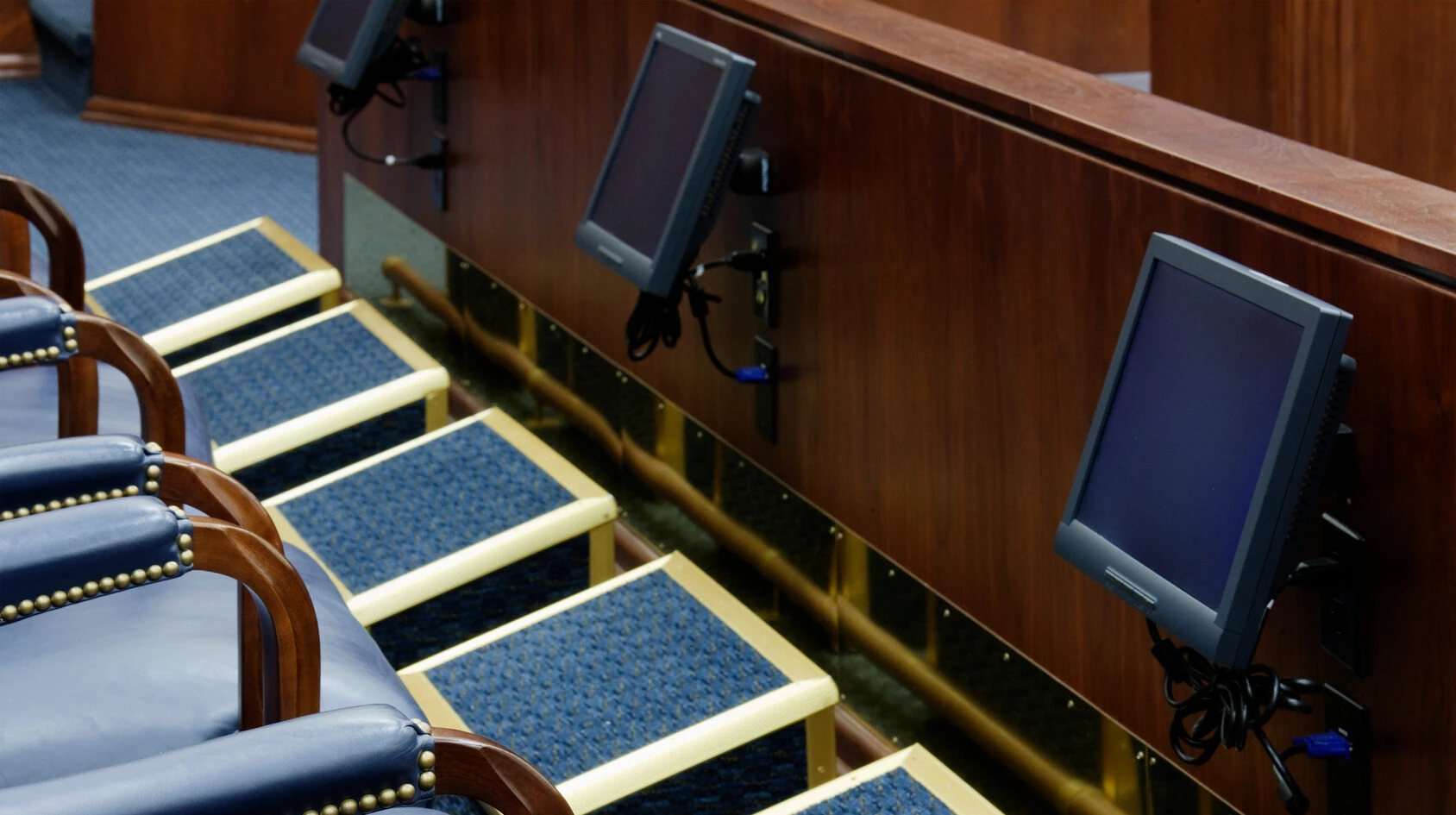In 2001, I co-authored an article entitled “An Ancient Art Jazzed by High Tech” for The National Law Journal with fellow litigation consultant, Stan Sandstrom. When we wrote it, I had just a few high-profile cases under my belt. Now that I have been through a few hundred trials, I wanted to take a moment to reflect on the article and on the current state of trial technology. What has changed in two decades? What communication principles have proven timeless? What is the right mindset going forward? I will examine these questions below.
What Has Changed in Trial Technology & Electronic Presentation?
Trial Technology Then
Leading up to the NLJ article, we were encountering the primitive stages of technology’s use in the courtroom. Not all attorneys were convinced of its benefits and even we “techies” were still working out the appropriate balance that would help—and not hinder—jurors’ comprehension of an attorney’s case. To some jurors (and attorneys), using courtroom technology might be viewed as the 800-pound gorilla in the room, or perhaps the ostentatious tool of “big bully corporations.”
By the time of the article, the tech-friendly courtroom transition was slowly underway, in some respects forced forward by a new reality: your average juror was increasingly technologically sophisticated and began to expect some level of electronic aid in the courtroom. As Stan and I wrote at the time, “Jurors are starting to regard nontechnological attorneys as unprepared rather than as ‘underdogs.’”
Jurors were simply adapting to new communication norms. The internet, and everything that came with it, was expanding exponentially. Alongside it, traditional media and entertainment upped their visuals; widely viewed news channels like CNN had nifty little tickers running across the bottom of the screen, colorful charts, financial graphs, etc. The most effective courtroom presentations integrated elements of those new norms. Such contemporary trial technology marvels included computerized documents, simple PowerPoint slides, and digital videos.
Trial Technology Now
Today’s presentation technology is so easy to use that it is no longer an obstacle for most trial attorneys. Impressive, full-featured software and hardware is affordable, smaller, and faster. We can use laptops, tablets, and even cell phones. Wi-Fi is freely available to both sides.
This is fortunate because the speed and depth at which technology and social media culture has taken over the everyday lives of the public is pretty astounding. Many jurors are now accustomed to communicating in images and bite-sized text. Efficient, hyper-polished graphics (even animations) are commonplace; the CNN ticker is still going strong, but it is now joined by Twitter tie-ins and complex infographics.
All this eye candy inundates and desensitizes its audience. Like old movie CGI, trial presentations can start to look and feel dated. As a result, much like 20 years ago, attorneys are compelled to bring their presentations up to a new, acceptable technological level to fit jurors’ ever-changing expectations. Such expectations affect not only what tech we use and when, but how we present with that technology. For one, current communication norms have greatly limited and divided jurors’ attention. Attorneys need to find a way to reach them, nevertheless.
[The many nuances of how best to adapt your courtroom presentations to current realities are not in the scope of this article, but our three-part series New Media’s Impact on Jurors contains more detail and offers plenty of tips.]
Timeless Trial Technology Principles
Some things still hold true, however. As I see it, the top two trial technology principles that have not changed—and are not going anywhere anytime soon—are as follows:
1. Story: Still the Most Important Aspect of Your Case
The story you tell as a trial attorney must never be overshadowed by your technology. Technology can emphasize, augment, and demonstrate, but only as a function of your overall narrative. Getting too flashy or too busy will confuse and overwhelm any audience.
The best trial graphics create a strong imprint and common reference points so that jurors have the facts and framework they need to remember and evaluate your case story during deliberations.
2. Variety: What Keeps Jurors Awake & Tuned-In
Offering variety to jurors extends beyond animations vs. timelines vs. checklists. It is equally about knowing when to turn off the technology altogether.
For example, say jurors have settled into your slide deck. You have a great blend of graphics, honed to perfection. But if you suddenly click off the screen, face the box directly, and speak with that characteristic attorney passion, you will then have their rapt attention as you underscore your crucial point. Likewise, the classic pad of paper and markers can bring a lot of clout when serving as a contrast from your otherwise electronics-driven presentation. There is an art to finding that balance.
Looking Forward: A Trial Technology Mindset for the Future
Given how courtroom presentations respond to developments in technology, those who stay up to date with how jurors expect to receive information will be at an advantage. It is certainly beneficial to work with an experienced design team who is familiar with modern media and who can help guide you toward the best graphics, the best techniques, and the best balance.
Various industries are already utilizing amazing new technologies, like 3D and geothermal imaging or drone footage. These technologies will offer trial attorneys the ability to tell even more engaging stories, pulling jurors into the environment like never before. I imagine that such advances will prove ever more useful as the latest movies, games, apps, and websites continue to drive jurors’ thirst for attractive and engrossing theatrics.
Nevertheless, do not forget to respect those timeless principles. Despite the many changes—to our tech and to our audience—I think the very first lines of that 20-year-old article are as pertinent as ever: “Attorneys are storytellers weaving the facts of a case into the fabric of an argument. Technology adds texture to the fabric, enhancing the pattern and making the final piece more vivid.”
This article was updated in September 2024. Find the newest version here.







